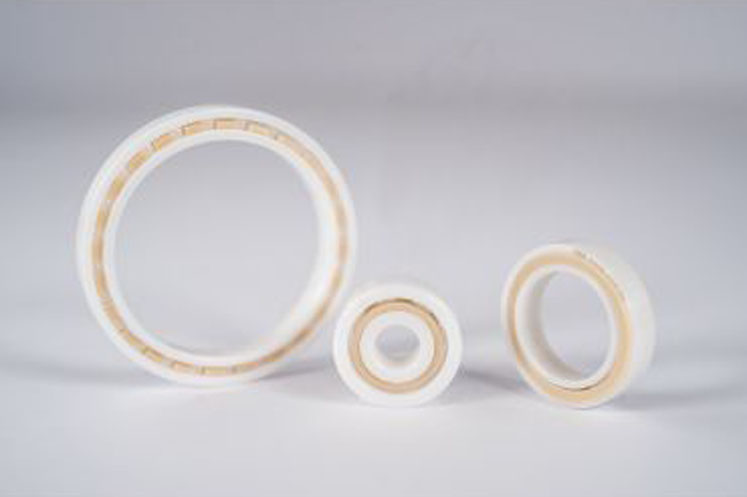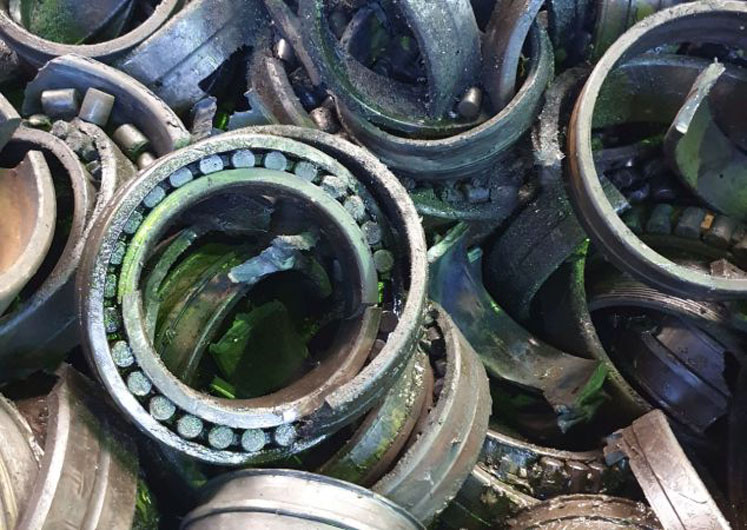Although the origin of the first bearing is unknown, ancient Egyptian drawings depict tree trunks under sleds with liquid-lubricated runners being used to move massive stone blocks. Although not as old as ancient Egyptian ones, some bearings in use today may have been produced decades ago.
So, what happens when manufacturers stop producing a certain type? Here, Chris Johnson, Managing Director at pharmaceutical bearing supplier, SMB Bearings, explains the importance of considered design choices and obsolescence management in pharmaceutical manufacturing.
Now more than ever, pharmaceutical supply chains must be reliable and agile. Traditionally, drug discovery and manufacturing has been a global effort, but the impact of COVID-19 has tested supply chain resilience.
A recent report by GlobalData found that 95% of industry professionals were concerned about the impact of COVID-19 on company performance and 23% expressed concern about supply and demand.
Prior to the global disruption, technological advancement in pharmaceutical manufacturing had seen considerable change in recent decades, with new drug delivery systems, wearables, 3D printed pills and automation. Yet in this highly regulated environment, this slow and considered advancement is likely to become even slower.

Most facilities will have little choice but to opt for a more cautious approach to new technology adoption, making incremental upgrades, blending smart technology and legacy equipment that has been in service for decades.
Against this backdrop, the rate at which components face obsolescence is growing all the time, making good obsolescence management crucial.
If a machine is not performing optimally, it makes far more sense to replace the part that isn’t working correctly instead of overhauling the whole system. However, sourcing spare parts could prove difficult if the component is no longer available from the original equipment manufacturer (OEM).
Although it isn’t impossible to find replacement parts, it’s much easier if obsolescence management is considered from the outset. When manufacturing a pharmaceutical device, it’s important to consider the lifespan of all the components individually — even the smallest of components such as bearings.
In addition, compliance with quality standards is not only an exclusive requirement for large components, but for the smallest suppliers in the supply chain too.
Choosing a bearing for a pharmaceutical environment
Sourcing a bearing for a hazardous area, such as a pharmaceutical application, can be a challenging process, particularly if the system is an ageing one. Pharmaceutical manufacturing requires some of the most meticulously designed and controlled production processes in all industry sectors.
Therefore, equipment used in this sector should support efforts to improve safety, not oppose them through inappropriate design choices. This makes selecting the right bearings for pharmaceutical equipment vital.
The extremely harsh solvents and chemicals used in pharmaceutical processes makes corrosion a real threat to plant uptime. Full ceramic bearings, for example, are often used in pharmaceutical applications owing to their highly corrosion resistant nature and high contamination protection.
Ceramic is non-porous and, as a result, it is practically frictionless. Unlike stainless steel bearings, full ceramic bearings do not suffer heat build-up within the bearing and therefore do not need lubrication to help dissipate the heat.

This means that full ceramic bearings do not require lubrication to run — which overcomes the issue of outgassing and contamination.
Hygiene is also of the utmost importance. Bearings used in pharmaceutical manufacturing should meet aseptic standards. When used in a pharmaceutical reactor or other piece of equipment used in pharmaceutical manufacturing, unlubricated full ceramic bearings do not run the risk of contaminating the product owing to lubricant leakage.
Full ceramic bearings are also fitted with non-contact seals that do not generate the higher levels of frictional torque associated with rubber contact seals.
Temperature impacts drug stability and only certain types of bearing material are suitable for use at low temperatures and high speeds, as commonly endured in pharmaceutical manufacturing.
Severely low temperatures can dramatically increase the viscosity of lubrication, a vital consideration for those using bearings in these environments. Increased viscosity can make the bearing difficult to rotate, rendering it ineffective.
Plan ahead
To complement careful component choice, more manufacturers are making use of industrial internet of things (IIoT) technologies to remotely monitor their processes and inform their obsolescence management strategy.
These technologies are becoming increasingly affordable and offer extensive possibilities. The first step in an effective obsolescence management plan should be to perform a complete system audit. It’s impossible to plan for the future without sound knowledge of your current system.
Consult the life expectancy data provided by the OEM and determine the life stage of your individual components and machines. This will give you a more accurate idea of how long your machines will serve you.
Prioritise asset criticality
When putting together an obsolescence management plan, it’s important to prioritise critical machine components such as motors, pumps and fans. For example, heating, ventilation and air conditioning (HVAC) systems in drug manufacturing plants are in constant operation and must aim for as close to zero downtime as possible.

Should a fan’s motor bearing reach the end of its life, it’s important that an appropriate replacement is sourced quickly so that production can recommence with minimum downtime.
With an effective obsolescence strategy integrated into a wider maintenance, repair and overhaul (MRO) plan, this will reduce financial and production loss headaches.
Next, conduct a risk assessment of your critical components, analyse the wear and research whether replacement components are still available from the OEM. Predictive maintenance techniques can be used to help determine the condition of this equipment and to estimate when maintenance should be performed.
Importantly, this occurs while the machine is in operation, which limits any unnecessary downtime and reduces the probability of unexpected failures.
Components should be grouped based on whether they are already obsolete or at risk of becoming so. This will allow pharmaceutical plant managers to identify appropriate parts suppliers in advance of a breakdown occurring.
Establish strong supplier relationships
Supply chains have become highly sophisticated and vital to the competitiveness of many companies. However, their global and interlinked nature also makes them increasingly vulnerable to a range of risks. Supply chain optimisation can minimise costs and reduce inventories … but has also removed buffers and flexibility to absorb delays and disruptions.
In an increasingly unpredictable world, it is particularly important for manufacturers to have strong supplier relationships that transcend geographical borders and help to minimise disruption.
When replacing an old bearing in an ageing pharmaceutical machine, you can’t just use any bearing. Therefore, it’s important to have strong relationships with specialist component suppliers that can keep your facility’s downtime to a minimum and costs low.
Finding a bearing supplier who can deliver the specified bearing to the same — or higher — quality standards than the original and who is also willing to supply in small batch sizes is key.
In a Pharmaceutical Quality System (PQS), change management applies across the entire product lifecycle. Before a company can manufacture a drug, it must gain approval to make sure it meets quality and safety requirements. This extends to the suitability of the rooms, equipment, the training of the personnel and the documentation.
The change control monitors all changes that can impact process reliability and product quality. All replacement parts should be evaluated in this way to ensure the system continues to meet the required standards.
Although it might be tricky to source ancient Egyptian bearings, most bearings today aren’t in danger of becoming completely obsolete. However, for ageing equipment, it might take a higher level of shopping around to source the correct replacement bearings.
Building links with specialist pharmaceutical bearing suppliers should be considered as part of a wider plant obsolescence management plan.
